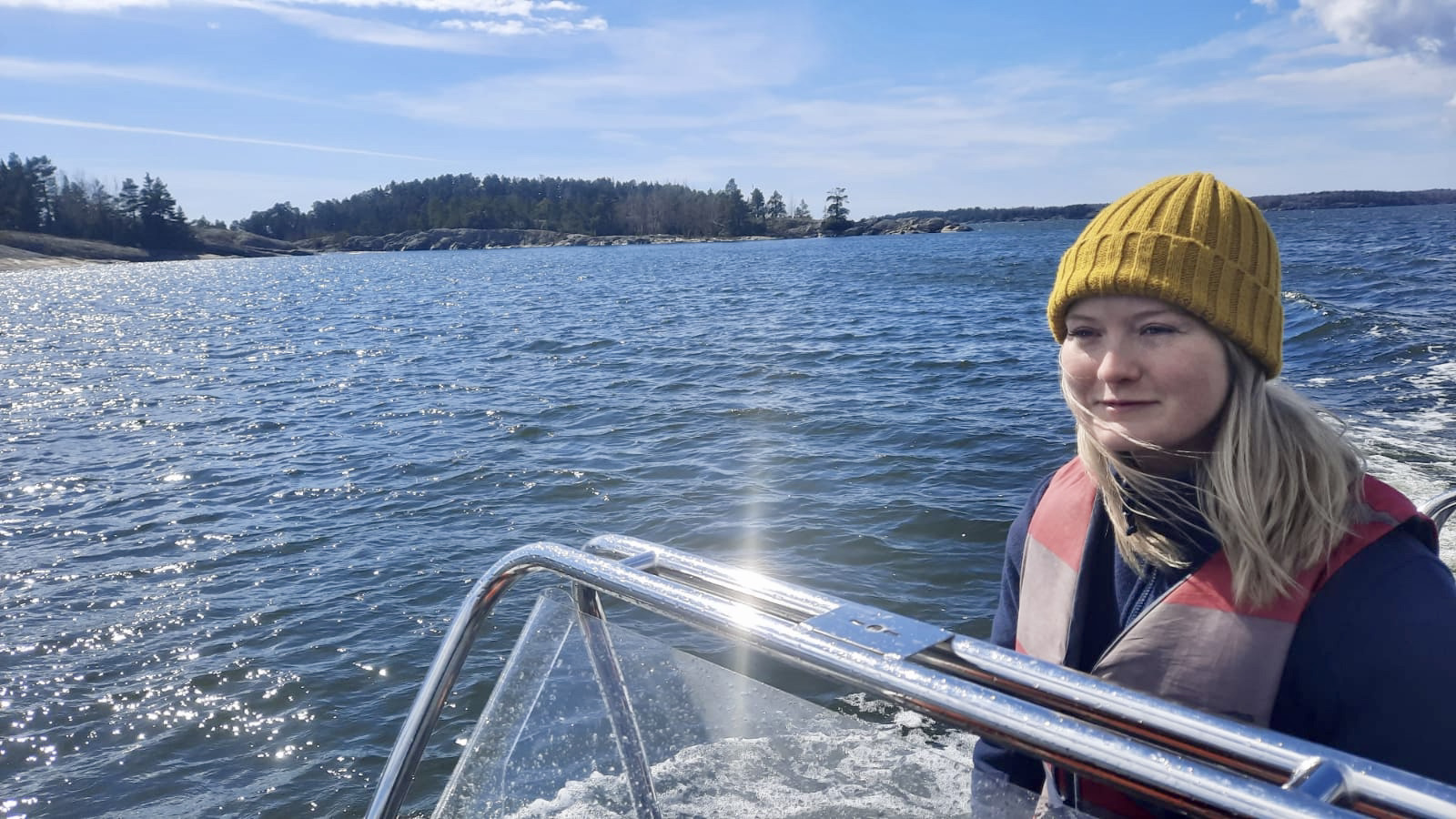Before Clio Hall started working on Baltic Sea ecosystems, she thought of seas as salty and lakes as fresh. But what happens when our seas become less salty and almost like a giant lake? This is the topic of Hall’s PhD project, titled ‘Climate change in the Baltic Sea: warming and freshening impacts on plankton food webs’.
Why should we be bothered about a less salty sea?
The Baltic Sea is one of the largest brackish seas in the world due to its limited exchange with open sea through the Danish straits. Salinity is predicted to fall even lower over the next 100 years due to climate change causing increased rainfall and ice melt in Northern Europe. This might not seem like a big cause of concern for humans compared to other changes happening in the Baltic Sea, such as pollution or eutrophication. However, declining salinity levels present a risk for marine associated species (who are sensitive to changes in salinity) and perhaps a potential gain for others who prefer less salty environments.
The scenario has the ability to cause imbalance across the whole food web and could disrupt the provision of ecosystem services, such as fisheries and the maintenance of good water quality. So we posed the question: if the Baltic Sea were to become a giant lake how would organisms living there be affected?
To answer the question, we focused on plankton as they represent a huge portion of the food web in the sea, are responsible for around 50-80% of the worlds oxygen and are all round a weird and wonderful looking bunch – I knew I wouldn’t mind slaving away looking at them through the microscope for hours.
The experiment
We set up an outdoor experimental facility at Tvärminne Zoological Station (TZS), located near to the town of Hanko, the southernmost point of Finland. We used mesocosms for the experiment. They are semi-natural experimental units which allow a person to control one or more parameters whilst keeping other environmental conditions the same. This consisted of 12 plastic mesocosm bags suspended from a floating platform.

The water filled into each of these bags contained different salinity levels to match different scenarios of how severely climate change will cause the Baltic Sea to freshen.
To do this experiment we needed to make the water found in the Baltic Sea less salty of course. This turned out to be quite a challenge as it is easier to add salt to water than it is to make water less salty without changing all other factors such as water chemistry and plankton community. Not to mention the only machine that is able to take large amount of salt out of water is usually used by super yachts systems and cost up to 100k euros each!
At this point we were losing hope as how to get such a large amount of freshwater into the experimental units.

Then a colleague at the station mentioned about a reservoir near the research station which had been separated from the sea 50 years ago and still contained plankton species associated with both marine as well as freshwaters.
This sounded perfect to us, but the problem was, that we needed A LOT of water. Basically, about the amount of water in a whole firefighting truck. So how would we transport a fire trucks amount of water to the research station?
Well, with a fire truck of course!
With the help of a local firefighting crew, we successfully extracted freshwater from the reservoir into the truck, drove it to TZS and pumped it out into the mesocosm bags. The whole floating platform was then dragged by boat into place with the help of TZS technicians and moored in the bay in front of the station, so I had a nice view of the whole spectacle from my office window.
Finally, the experiment was set up and is currently on-going. We will sample every 2 days for 6 weeks (picture 3) to see how a range of different variables such as nutrients, bacteria, phytoplankton and zooplankton etc. are affected by freshening of the Baltic Sea. The samples I am collecting are still being processed and results from the experiment will be published very soon in a scientific journal!
What we should expect for the future



Our preliminary results indicate that as the Baltic Sea becomes less salty, there will be a shift from more marine associated zooplankton such as copepods and cladocerans to more simple and freshwater organisms such as rotifers.
What does this mean?
The shift has big implications for the entire food web as fish are dependent upon more nutritious zooplankton (such as copepods) for food and therefore may affect fish stocks in the Baltic. This in turn can also affect seabird and mammal populations. Cyanobacteria which cause harmful blooms across the Baltic Sea also prefer freshwater environments over salty ones. This means we could see even more harmful blooms in summer months to what we already experience today.
The results from this project will then be used to develop recommendations for marine management strategies for the Baltic Sea. We want to ensure continued provision of ecosystem services for future generations.

The writer works as a PhD student at Tvärminne Zoological Station, University of Helsinki. Her PhD project titled ‘Climate change in the Baltic Sea: warming and freshening impacts on plankton food webs’. This experiment is funded by the Nessling Foundation and is part of the AQUACOSM EU network of mesocosm facilities.

